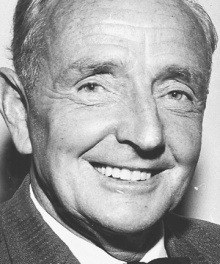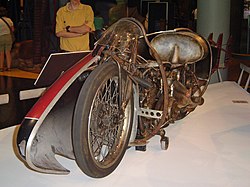Herbert James 'Burt' Munro, (Bert in his youth) (25 March 1899 – 6 January 1978) was a New Zealand

motorcycle racer, famous for setting an under-1,000 cc world record, at Bonneville, 26 August 1967. This record still stands today. Munro was 68 and was riding a 47-year old machine when he set his last record.
Working from his home in Invercargill, he worked for 20 years to highly modify the 1920 Indian motorcycle which he had bought in 1920. Munro set his first New Zealand speed record in 1938 and later set seven more. He travelled to compete at the Bonneville Salt Flats, attempting to set world speed records. During his ten visits to the salt flats, he set three speed records, one of which still stands today. His efforts, and success, are the basis of the motion picture The World's Fastest Indian (2005), starring Anthony Hopkins, and an earlier 1971 short documentary film Burt Munro: Offerings to the God of Speed,both directed by Roger Donaldson.
Challenges
Munro's Indian Scout was very early off the production line, being only the 627th Scout to leave the American factory. The bike had an original top speed of 55 mph (89 km/h). But this did not satisfy Munro so in 1926 he decided to start modifying his beloved Indian.
The biggest two challenges for Munro to overcome while modifying his bike were his lack of money and the fact that he worked full time as a motorcycle salesman. He would often work overnight on his bikes (he had a 1936 Velocette MSS as well), then in the morning, he would go to work, having had no sleep the night before.
Because Munro was a man of modest means, he would often make parts and tools himself instead of having them professionally built. For example, he would cast parts in old tins, make his own barrels, pistons, flywheels, etc. His micrometer (a precision measuring instrument) was an old spoke.
In its final stages, the Indian's displacement was 950 cc (as built it was 600 cc) and was driven by a triple chain drive system.
The "Munro Special," as Munro called his bike, is now owned by a motorcycle enthusiast in New Zealand's South Island, and is on display at E Hayes & Sons, Invercargill. There is also a second motorcycle purported to be the original "Munro Special" in America.
Bonneville Salt Flats and Speed Week
The Bonneville Salt Flats in northwestern Utah, are known worldwide for their many miles of flat, compacted salt, perfect for testing speed machines. DuringSpeed Week, usually in mid-late August, vehicle enthusiasts from around the world gather at Bonneville.
Munro travelled to Bonneville ten times, the first time for "sightseeing" purposes. In the nine times he raced at Bonneville, Munro set three world records, in 1962, 1966 and 1967. He also once qualified at over 200 mph (320 km/h), but that was an unofficial run, and was not counted.
Following the mis-spelling of his name in an American motorcycling magazine in 1957, Bert Munro changed his name to Burt.
Records
- In 1962, he set a world record of 288 km/h (178.95 mph) with his engine bored out to 850 cc (52 cubic inches)
- In 1966, he set a world record of 270.476 km/h (168.066 mph)
- In 1967, his engine was bored out to 950 cc (58 cubic inches) and he set a class record of 295.44 km/h (183.58 mph). To qualify he made a one-way run of 305.89 km/h (190.07 mph), the fastest-ever officially-recorded speed on an Indian.The unofficial speed record (officially timed) is 331 km/h (205.67 mph) for a flying mile.
- In 2006, he was inducted into the AMA Motorcycle Hall of Fame.
